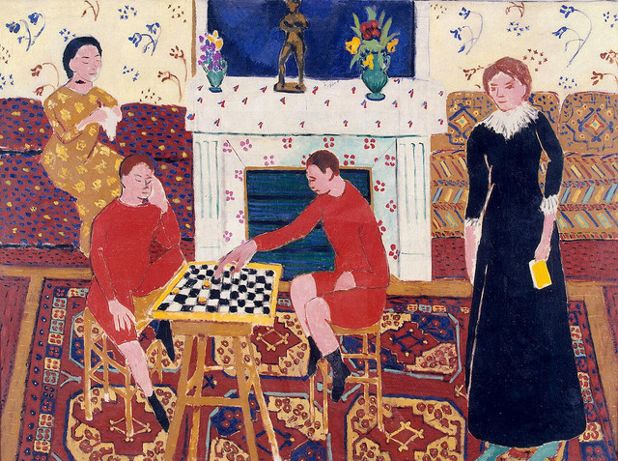agreeing to take part in this new column of my blog.
Through this i want to get to know the artists that i appreciate
most and i would like that they share with me their thoughts,
worries, as well as an overview of a few aspects of interest in
their life.
Just a casual conversation between friends.
I met you as an administrator of the Kiosk of Democracy blog,
where you displayed a part of my photography work.
However it excites me to know who is the man Sascha in his
daily life, to discover who he is when he logs off from his blog
and social media. Do you enjoy cinema, do you listen to music,
what are the things that calm you?
– In the morning I get up and greet the day. Every day is far-reaching. The light welcomes me. I move. I am expectant. I’m interested in looking at the world every day. The sound of life. My own heartbeat. My pulse. People experience. Discover art. I try to do everything with passion. In all, I try to find the magic and also the deep abyss, the sadness, the joy, the love. Embrace life and immerse yourself in it. Dissolve resistance with the longing and intensity of art.

I give my verve for the art. For the existence. I believe in transforming life with art. And in a broad sense, as Joseph Beuys said, every human being is an artist. And everything is design. And the life things are like an immense fantastic cosmos. The poetry in it i would like to help bring forth and to act vehemently gentle.
When I leave the apartment I go to my regular cafe. It’s called Panama. I dwell in it. Have a CoucouClaamChino (Cappuchino) and read the newspaper. Sometimes it comes to surprising stories. I watch the people in front of the cafe. After that, I go to my various jobs. Always free. No permanent employment. Maybe I’m a vagabond.
Leaving my apartment I go to my studio to work on new pictures and characters.After I pick up my son Aljoscha (he was born in 2009) from the hoard. I’m with my son two days a week and weekends together.

– As I’ve seen in your page realist feuer kunst Sculpture and Painting are your favorites. Will you take me on a trip from the start of your work until today?
I have a feeling and I’m gonna go ahead and say that you prefer probably painting; am I wrong? Just tell me.




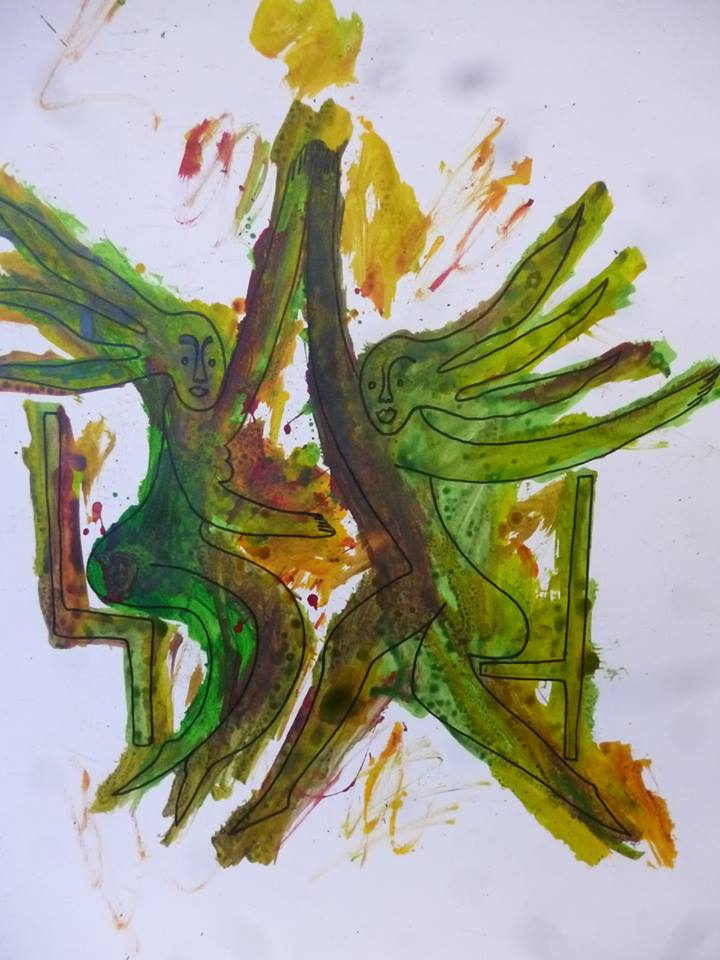
– My art is very sculptural and graphic. I like to model with my hands. Bring existing things into new forms. Engaging the whole body, working contemplatively with all your senses. To be in deep oblivion to meet the core. Full of momentum and grounded at the same time. In great concern and in great openness. In violent turmoil and in wonderful confidence.

Break the circle and close the circle. Lost and entrusted. Breathe and exhale.

– One of your works that I love is this. It touches me and excites me,talk to me a little about that.

– This painting. A couple, an ensemble. Being together. To defy the rigors of reality. United to be a family. Manifest love. In solidarity. Cohesion. This very much determines the content of my art. The couple painting is a symbol. A symbol for that a human being is not lost alone in this world. That two individual persons or a group are a hopeful union. The Couple mean beyond your own individuality, you come to a deeper understanding of everything.
– I would also like to talk about your first and last project,sculpture
or painting it does’t matter.How much did your approach
change,from your very start up to nowadays. If it has changed
at all!
– My first exhibition was in 1990 on the Greek island of Naxos in the village of Apiranthos.I was touched by this possibility. I would like to come back to Greece with my own art. And also with the kiosk for which i work daily. For which i live for. In 1990, with the first exhibition, I had worked on poems by Jakovos Papadopoulos and I showed my work in the school of the village.
Since it has already meant a lot for me to bring it into relationships. And today with the patchwork kiosk of democracy. It is like a total work of art for me. A community artwork. This is very important to me. The single artwork, photograph, film in context with other works of other artists. A hymn of creative forces that need no domination and no violence.
Actually i try to connect three different art enterprises. There is the KünstlerLaden – ArtistsInvite. This was an artspace really free and without a jury. Then the Kiosk of Democracy. In the time from it start in 2012 the Kiosk made some little exhibitions. Next,the documenta in Kassel in a students “Periptero” artspace. Then at last the Camera Artista. A place for the KünstlerLaden – ArtistsInvite and for the Kiosk of Democracy. Expanded by a library, a collection of works of art, an archive of catalogs, with a scholarship for an atelier, a coffee and tea shop. International and local.
– As I mentioned above, you are the administrator of the blog
Kiosk of Democracy where you display the work of many artists
from different chapters of art.
It is clear to me that you are very much fond of photography;
and I wonder:Does Sascha photograph?

– There are a lot of photographs on the kiosk. Photographs are like painting. Full of light and reflection. I myself work with photographs, but I am not an avowed photographer.
– A final question which interests me in particular and I would like
your opinion on it:
You are a person of social media and an artist.
“Likes” dictate things,so do you think social media can have an
effect on artist work?
Rembrandt once said that you become an artist when you stop
being concerned about the acceptance of your art.
In our times can an artist have the power to be unaffected?
– Yes, I think it is possible to be very untouched by the rush of time. Of course, the environment has an influence on every human being. There is no escape to a desert island. I think it is possible, despite all the conquest and pressure, to have a virginity that is full of truthfulness.
– Thank you very much Sascha for this conversation and for the
opportunity that you gave me to know better the man behind the
Kiosk.
http://kioskderdemokratie.blogspot.gr/
https://www.facebook.com/realistfeuerkunst/
https://chanarie69.tumblr.com/
https://twitter.com/chanarie69

















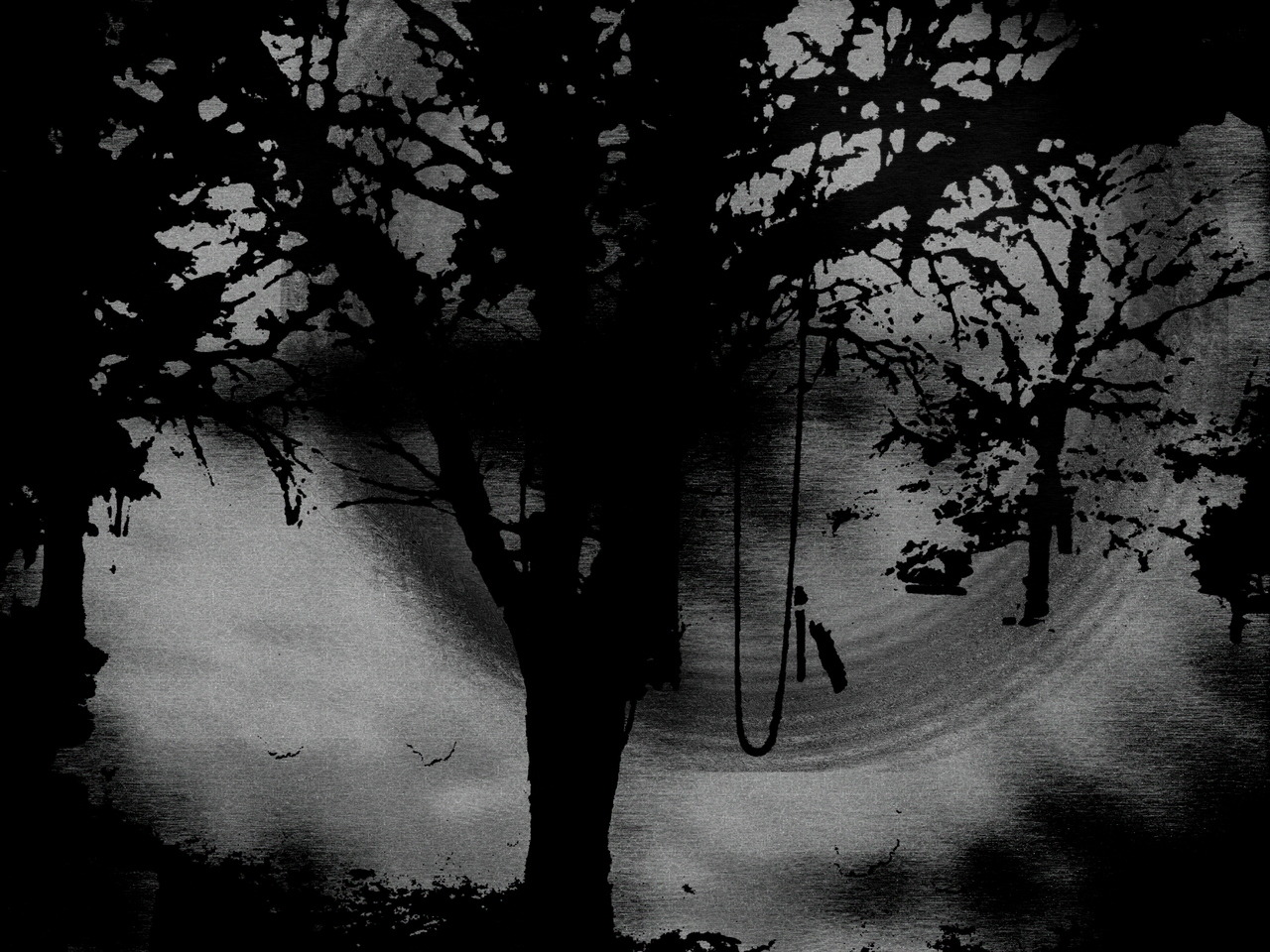


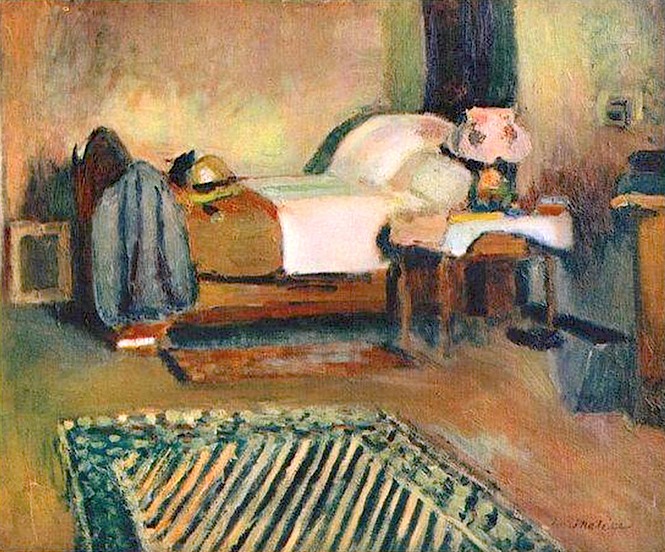

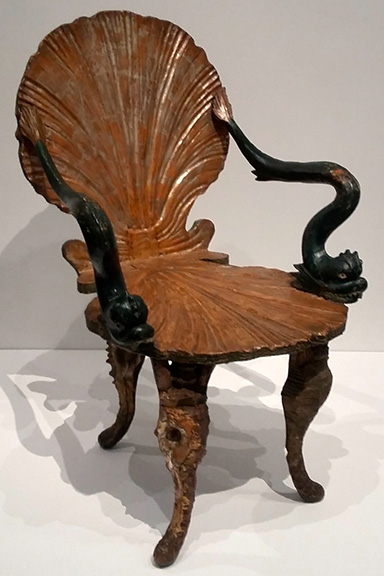





 This version of chocolate pot was bought by Pablo Picasso
This version of chocolate pot was bought by Pablo Picasso

